(This is a translation of the first Spanish-language original feature published on Nevermore. The Spanish version can be found here.)
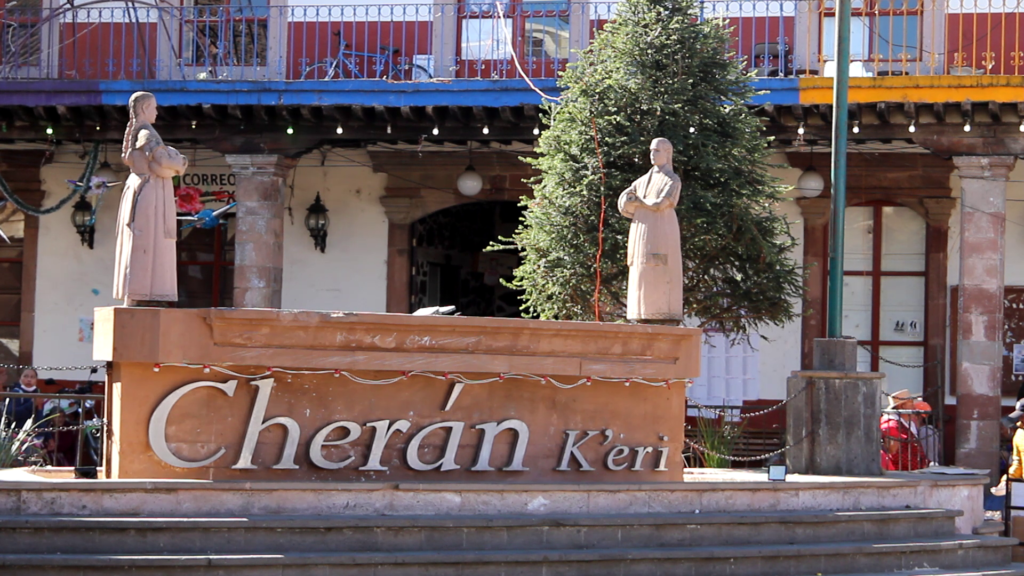
Recently, two members of the Nevermore team traveled to the autonomous town of Cheran in Michoacan, a state which has long been a hotspot in Mexico’s bloody drug war. After years of being terrorized by narco-traffickers who operated with conjunction with the state government, the inhabitants of Cheran revolted in 2011, successfully expelling both the government and other organized crime from their municipality.
After taking control of their community, the people of Cheran decided to ban political parties, abolish police, and establish a unique form of participatory democracy based on their indigenous Purepecha traditions.
After taking control of their community, the people of Cheran decided to ban political parties, abolish police, and establish a unique form of participatory democracy based on their indigenous Purepecha traditions.
As anarchists, it was truly beautiful to be in a place where the people have seized control of their community from the state, and we were delighted to see that the community, by all appearances, is doing very well.
Cheran has now been self-governing for over 10 years, and despite narco-violence being endemic in much of Michoacan, the autonomous town seems to be somewhat of an oasis in the midst of Mexico’s ongoing drug war. According to a 2017 article in the Los Angeles Times, there were ZERO murders or kidnappings reported in Cheran in the six years following the uprising.
In 2018, the Guardian reported that not a single kidnapping or extortion attempt had been reported in Cheran since the 2011 uprising.
Given that Cheran is located in Michoacan, a state in which narco-violence is endemic, the success of Cheran’s self-governance is nothing short of remarkable.
Given that Cheran is located in Michoacan, a state in which narco-violence is endemic, the success of Cheran’s self-governance is nothing short of remarkable.
Cheran
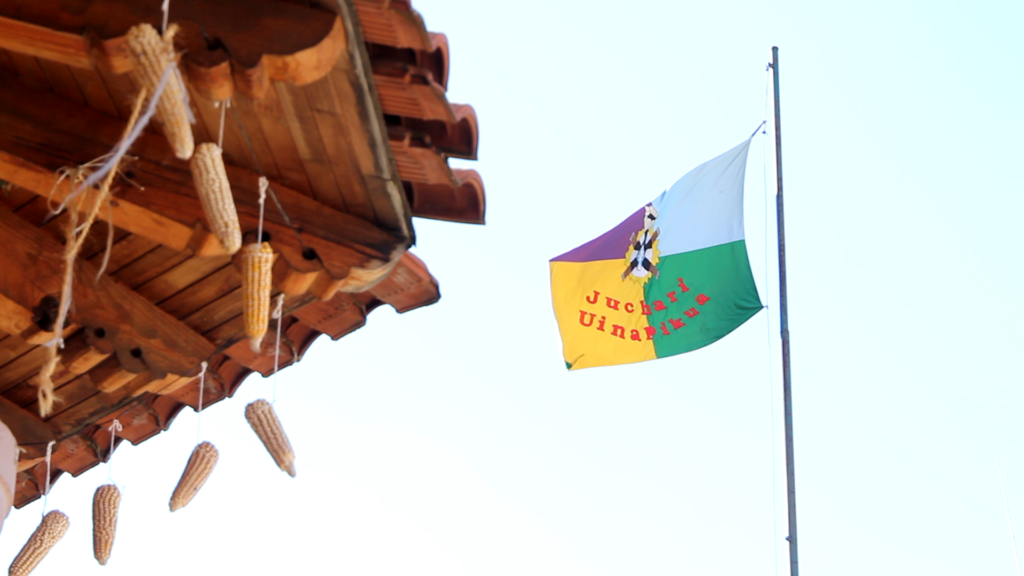
The town of Cheran K’eri is located 100 kilometers from the state capital of Morelia in Michoacan. It is home to over 20 thousand people, most of whom are Purepecha, an indigenous nation famous for resisting all attempts of the Aztec Empire to subjugate them.
In its central square, where nearly every town in Mexico flies the Mexican flag, stands the flag of the Purepecha people, which reads: Juchari Uinapekua, which can be translated as “Our Strength”.
In its central square, where nearly every town in Mexico flies the Mexican flag, stands the flag of the Purepecha people, which reads: Juchari Uinapekua, which can be translated as “Our Strength”.
The territory of Cheran cover an area of more than 20,000 hectares, and the economy of the region has long been based on the commercial harvesting of pine resin, as well as agriculture, timber, and the raising of livestock.
However, beginning in 2008, the community began to be plagued by illegal logging, which was carried by businesspeople who are also involved in both the drug trade and the avocado industry.
These loggers proceeded to cut down the community’s forests at a breakneck pace. Between 2008 and 2011, over 8,000 hectares were devastated. To make matters worse, these criminal elements profiting from the destruction of the forests were doing so with the intention of converted the deforested land into avocado plantations.
In other words, they were planning to take over the area and use it as a base of operations for years to come.
Women were the Leaders of the Uprising
Mrs. Josefina Estrada Velázquez, who worked solely as a housewife before the uprising on April 15, 2011 and was part of the first Consejo Mayor, says that they had noticed since then that the Institutional Revolutionary Party (PRI) was encouraging forest exploitation policies and that it was therefore necessary to expel the political parties that were only looking out for their interests.
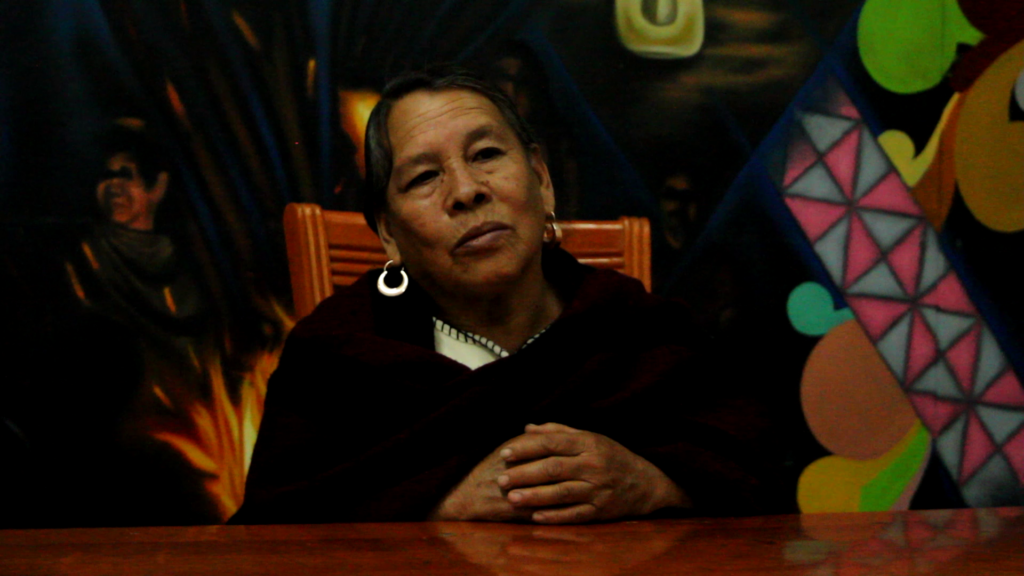
She explained that the PRI had political agreements with the “Malos”, as the community calls the loggers and narcos that terrorized the community, as they were given protection by the government.
The PRI had political agreements with the “Malos”, as the community calls the loggers and narcos that terrorized the community, as they were given protection by the government.
“The PRI had promised them a forest so that they (the PRI) could enter the government. Out of fear of the Malos and their threats, nobody would go to the forest anymore because they wouldn’t come back.”
The situation of terror did not cease and neither did the loggers. But the situation changed when the “Malos” began to demand more and more from the community.
“First it was the forest, then the cattle, then the women. Then the ‘Plaza’ (extortion fees). Before, they would enter the town armed. We couldn’t do anything.” Josefina explained.
But everything changed when they began to exploit the water source that supplied the community. Josefina said that this triggered a chain reaction, and the inhabitants of Cherán to defend the town, since the legacy of their Purepecha ancestors had been to take care of the forest, because without it the water that reaches the community would deplete.
But everything changed when they began to exploit the water source that supplied the community… This triggered a chain reaction of the inhabitants of Cherán to defend the town, since the legacy of their Purepecha ancestors had been to take care of the forest, because without it the water that reaches the community would deplete.
On the morning of April 15, 2011, the bells began to ring at 7 a.m. to rally the people. It is important to emphasize that this sudden reaction was not organized, although community resistance had been going on for several years, and it was the women and youth who started it. Most of the men were in the fields working, and some had migrated to the United States to find jobs to help their families back home.
According to Mrs. Josefina, “When we rang the bells, women and young people began to arrive. I don’t know where so many came from at that moment. We attacked by surprise, the day we faced those people. At that time I was not afraid and I was determined, come what may.”
“When we rang the bells, women and young people began to arrive, I don’t know where so many came from at that moment. We attacked by surprise, the day we faced those people. At that time I was not afraid and I was determined no matter what happened.”
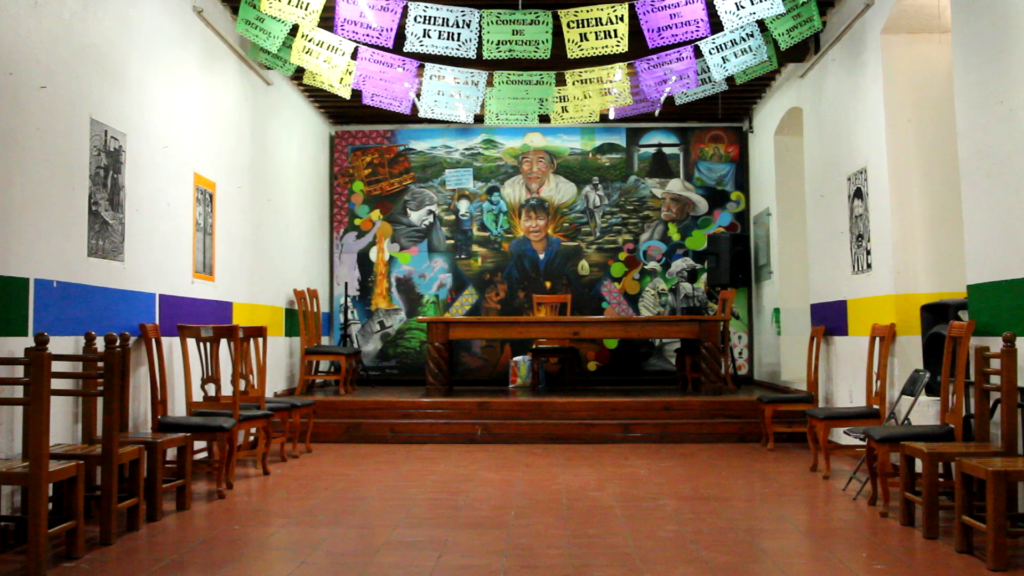
Armed only with stones, sticks, homemade firecrackers and Molotov cocktails, the young men and women managed to detain five of the timber traffickers. Then, after a few hours, armed people entered the town with the intention of rescuing the detainees.
Armed only with stones, sticks, homemade firecrackers and Molotov cocktails, the young men and women managed to detain five of the timber traffickers.
“They came in shooting bullets. The municipal president himself went with them, with the Malos, and thank God the young people came out to defend us with stones, sticks and bottles of gasoline. That was when we spoke to Zamora in order to speak to the army and they told us no, that we needed a document signed by the municipal president in order for them to be able to enter. Then we talked to the government in Morelia and they told us the same thing.”
The most critical moment of the confrontation was during the attempt to rescue the detainees, when the community had no choice but to use “cuetones”, which are fireworks normally used in the town’s patron saint festivities. With stones, sticks and cuetones they managed to resist, and although there were deaths on both sides, the people of Cheran prevailed.
With stones, sticks and cuetones they managed to resist and although there were deaths on both sides, the people of Cheran prevailed.
What Happened Next?
After the uprising and the expulsion of the Malos, the town managed to organize using a form of political decision-making passed down to them from their Purepecha ancestors. The resulting form of governance, which could be described as a highly participatory horizontal democracy, is unique in Mexico.
For hundreds of years, Cheran has consisted of four distinct neighborhoods, and it was determined that they would form a Council which would make decisions for their particular
Pedro Chavez Sanchez, who was head of the Consejo Mayor between 2015 and 2018, explained that after the uprising, there was no meaningful attempt on the part of either the state or federal governments to work with the people of Cheran to address the problems that had led to the uprising. For this reason, they decided to create their own form of governance, rather than attempting to reform the system that had failed them. This is how Cheran became an autonomous town.
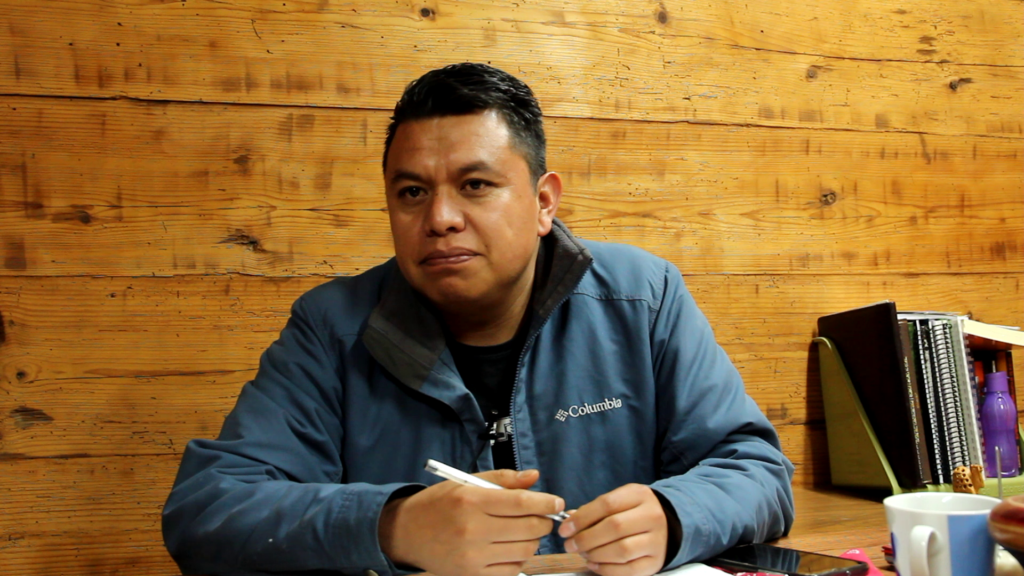
“We had no choice but to return to our roots, to guide ourselves through our worldview, to redesign a way of life that we already had and that had to be strengthened. So we said: ‘No more political parties, no more police and no more conventional city hall’.”
“We had no choice but to return to our roots, to guide ourselves through our worldview, to redesign a way of life that we already had and that had to be strengthened. So we said: ‘No more political parties, no more police and no more conventional city hall’.”
Self-Governance in Cheran
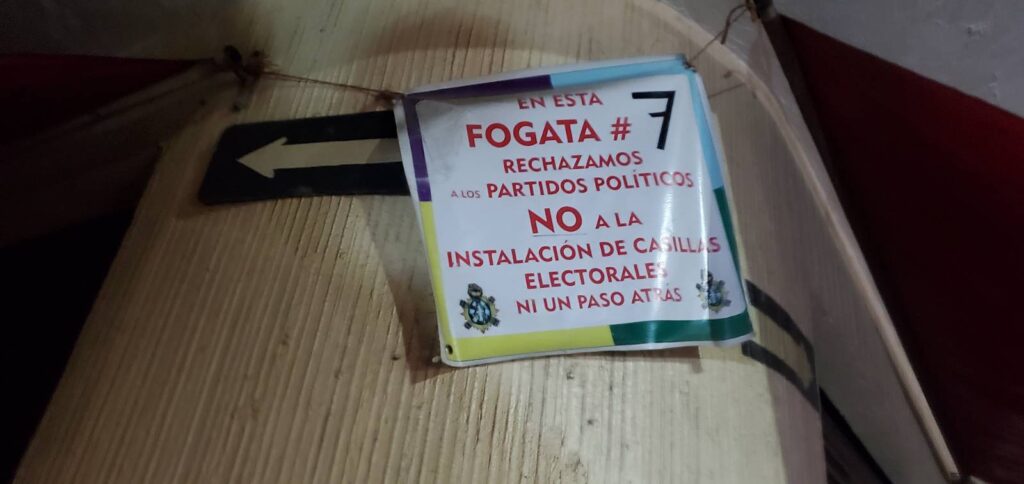
The four neighborhoods organized by groups of neighbours called “fogatas”, one in each street. From here the neighbors send representatives to four Communal Councils, one for each neighbourhood. The positions are rotated so that the whole population participates. It is very common for housewives to hold important positions in the Consejo Mayor.
It is very common for housewives to hold important positions in the Consejo Mayor.
The Fogatas, during the uprising, arose of the need for security. Groups of neighbours organized themselves to keep watch over their neighbourhoods, with the aim of keeping everyone safe during the conflict. Subsequently, they became units of political organization in a form of direct democracy. The Fogatas send representatives to four Communal Councils, which in turn each send 3 representatives to the Consejo Mayor, which has taken the place of the former municipal government. Campaigning and political proselytizing in the partisan style of the Mexican state was also prohibited.
The Fogatas send representatives to four Communal Councils, which in turn each send 3 representatives to the Consejo Mayor, which has taken the place of the former municipal government. Campaigning and political proselytizing in the partisan style of the Mexican state was also prohibited.
The police force that existed prior to the uprising was disbanded, and replaced by a “Ronda Comunitaria”, which consists of about 40 community members. Given the political situation in Michoacan, where narco-violence is endemic in much of the state, it was important that the community be offer to provide security to its residents.
For this reason, members of the Ronda Comunitaria maintain constant vigilance, maintaining a 24/7 armed guard at the 3 access points to the town. Although the members of the Ronda Communitaria are not volunteers, we were told that they are modestly paid, and that they are motivated by a commitment to protect the community.
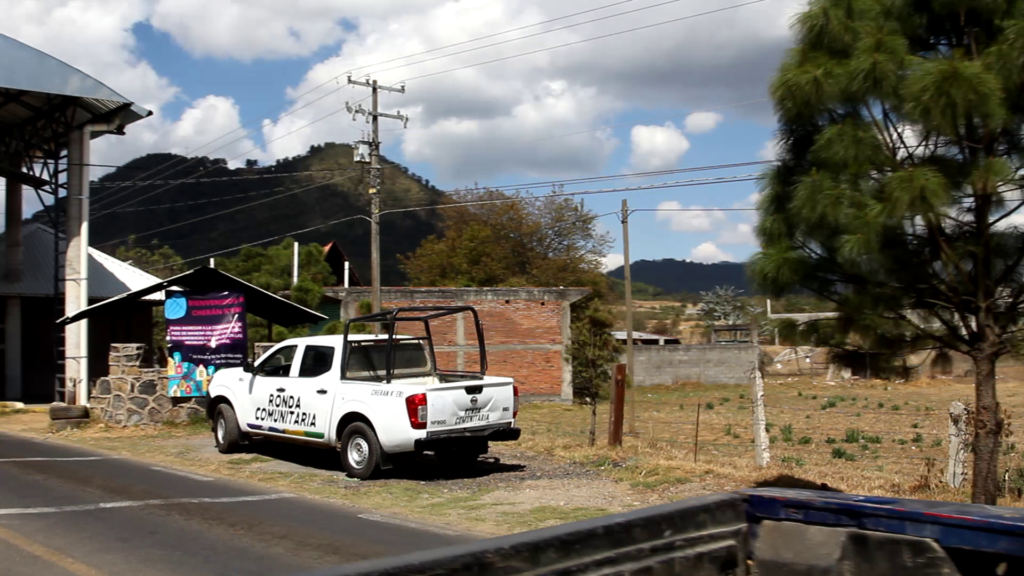
Consequently, Cherán began to seek legal recognition of its right to self-govern, advancing a argument based on the 2nd article of the Mexican constitution, which protects the right of indigenous communities to govern themselves. In 20XX, the Supreme Court of Mexico ruled in favor of the community, meaning that the authority of the Consejo Mayor over the territory of Cheran K’eri, including that of self-defense, is considered legal and legitimate by the Mexican state.
Pedro Chavéz explains: “We have the constitutional right of self-determination to decide how to organize ourselves politically, culturally, educationally and above all in the defense of our territory. We are not outside the law or the constitutional framework.”
“We have the constitutional right of self-determination to decide how to organize ourselves politically, culturally, educationally and above all in the defense of our territory. We are not outside the law or the constitutional framework.”
In 2012 the expulsion of Cherán’s political parties led them to not participate in the federal elections of that year. According to the people that we spoke with, tremendous division was caused by the competition amongst the six political parties that existed in Cheran, who pursued the interests of their parties rather than serving the community. Everyone agreed that the community is much better off without political parties, and that much conflict has been avoided since they have been banned.
Everyone agreed that the community is much better off without political parties, and that much conflict has been avoided since they have been banned.
Behind the deforestation and illegal sale of this natural resource is the million-dollar avocado industry. The profits from this industry are reason enough for the loggers to devastate thousands of hectares and replace them with avocado plantations.
Behind the deforestation and illegal sale of this natural resource is the million-dollar avocado industry. The profits from this industry are reason enough for the loggers to devastate thousands of hectares and replace them with avocado plantations.
“Implicitly our movement is against the system, because ultimately we are opposed to the path that neoliberalism is taking us on (…) It is easy to understand the logic that the Malos have for appropriating our territories. They cut down and burn everything so that the people will say that there is no reason not to change the legal use of the land, and this way they appropriate our lands, so that we become their slaves or just cheap labor for them”.
Defending Mother Earth
According to Pedro Chavez, the people of Cheran are guided by three main principles: Justice, Security, and the defence of their ancestral territory. As indigenous Purepecha people, they consider the defense of Mother Earth to be a sacred responsibility, and the importance of taking care of the land was an important part of what motivated them to revolt against both the federal government and the narcos.
According to Pedro Chavez, the people of Cheran are guided by three main principles: Justice, Security, and the defence of their ancestral territory.
Cherán has municipal forest rangers and a reforestation project and as a community they have decided to preserve their forests and only use the resin from them to commercialize it and obtain income that provides employment for some inhabitants and maintains a constant reforestation of the forests.
This decision was not taken lightly, for the avocado industry is highly profitable. However, these profits come at a cost, namely violence and terror carried out by organized crime, as well as multinational corporations and corrupt politicians and bureaucrats.
Mr. David, a member of the Council of Communal Goods, took us on a day of guard duty in the forest to the limits of Cherán with Zacapu in “La Nevería”. Here we were able to see the boundary between the territory of Cheran and that of their neighbours. In this picture, you can see the the difference between the forests of Cheran and the deforested land which has been prepared for avocado plantations.
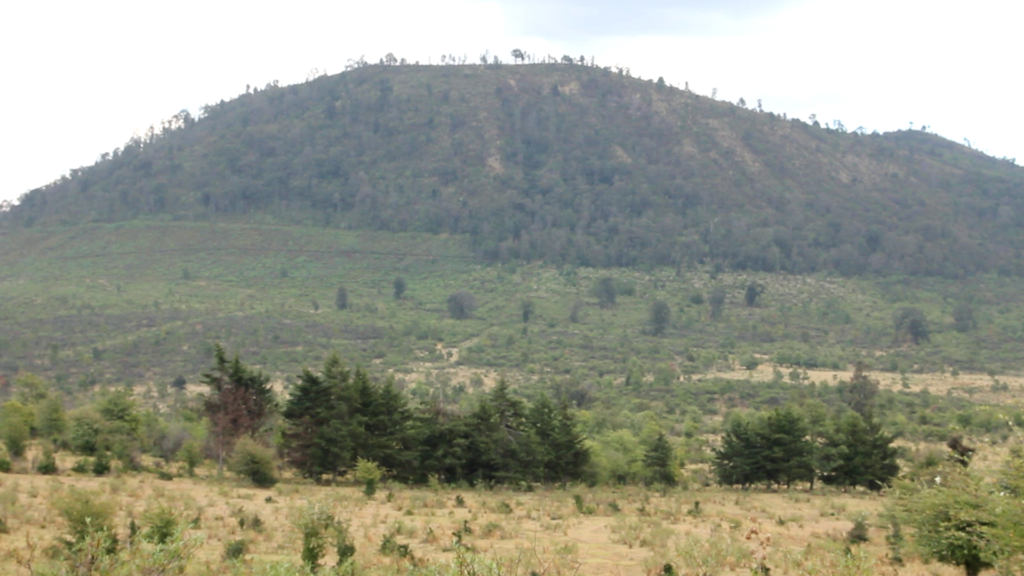
Mr. Chavez is clear where he stands in regards to the avocado business, saying: “Here we call it “green gold”, but what it brings is violence to the communities. What’s more, it destroys the ecosystem.” This is because the avocado plant absorbs a lot of water and is not well regarded among the Cherán community members.
“Here we call it “green gold”, but what it brings is violence to the communities. What’s more, it destroys the ecosystem.” The avocado plant absorbs a lot of water and is not well regarded among the Cherán community members.
David told us that the territory of Cheran comprises of approximately 16,000 hectares of natural forest. Of this, almost half was cut down in the years prior to the uprising in 2012. Mr. David told us that 80% of those 8,000 hectares have been reforested since the community took control.
“We are taking back and rescuing what our ancestors taught us: to take care of our natural resources. Not to allow other people from outside our territory, especially multinational corporations that only plunder… The only thing we do is to put it into practice, we don’t have pretty speeches. We are guardians of Cherán’s nature.”
In other words, the community made a conscious decision to prioritize the health of the ecosystem above potentially massive profits from the avocado industry. This is part of what we found so inspiring about Cheran – here is a community that has chosen to value the health of the land and the community above money.
That said, the people of Cheran do gain a living from the forest. The main industry in Cheran is pine resin, which has a wide range of commercial uses, and is used in the production of paint, cosmetics, sealants, and various chemicals. Although many people are employed in this industry, the income does not compare with the profits possible with avocados. However, the community prefers a more modest income to the violence that the avocado business attracts.
Mr. David hopes that the example of Cheran serves as an inspiration to other communities, stating: “Let’s take care of what we have, especially the territories of the original people… I believe that we are the future of the world because we are very connected to the earth.”